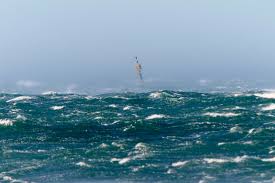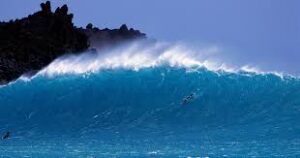Maui experiences significant winds due to several geographical and meteorological factors.
 Location and Topography: Maui’s location in the middle of the Pacific Ocean exposes it to trade winds that blow consistently from the northeast. These trade winds are the result of the temperature difference between the equator and the poles, combined with the rotation of the Earth. As the air flows from high-pressure areas to low-pressure areas, it creates the prevailing winds experienced on the island.
Location and Topography: Maui’s location in the middle of the Pacific Ocean exposes it to trade winds that blow consistently from the northeast. These trade winds are the result of the temperature difference between the equator and the poles, combined with the rotation of the Earth. As the air flows from high-pressure areas to low-pressure areas, it creates the prevailing winds experienced on the island.
 Mountainous Terrain: Maui’s topography plays a significant role in its windy conditions. The island is characterized by a series of mountains, including the dormant volcano Haleakalā. As the trade winds encounter these mountain ranges, they are forced to rise. The air cools and condenses as it ascends, forming clouds and precipitation on the windward side of the mountains. This process, known as orographic lifting, intensifies the winds as they squeeze through the valleys and gaps between the peaks.
Mountainous Terrain: Maui’s topography plays a significant role in its windy conditions. The island is characterized by a series of mountains, including the dormant volcano Haleakalā. As the trade winds encounter these mountain ranges, they are forced to rise. The air cools and condenses as it ascends, forming clouds and precipitation on the windward side of the mountains. This process, known as orographic lifting, intensifies the winds as they squeeze through the valleys and gaps between the peaks.

Venturi Effect: The narrow channels and valleys on Maui act as natural wind tunnels. When the trade winds pass through these narrow passages, such as the Pailolo and ʻAlenuihāhā channels, they experience the Venturi effect. According to this principle, as the wind squeezes through a narrow space, its speed increases. Therefore, the winds on Maui can be amplified in these areas, leading to strong gusts and windy conditions.
 Seasonal Variations: Maui’s wind patterns can also vary seasonally. During the summer months, the trade winds tend to be more consistent and stronger, providing a cooling effect on the island. This is due to the temperature difference between the warm landmasses and cooler ocean waters. However, during the winter months, the trade winds can be interrupted by the presence of low-pressure systems, resulting in calmer conditions.
Seasonal Variations: Maui’s wind patterns can also vary seasonally. During the summer months, the trade winds tend to be more consistent and stronger, providing a cooling effect on the island. This is due to the temperature difference between the warm landmasses and cooler ocean waters. However, during the winter months, the trade winds can be interrupted by the presence of low-pressure systems, resulting in calmer conditions.

The combination of Maui’s location in the Pacific, its mountainous terrain, the Venturi effect in narrow channels, and seasonal variations contribute to the island’s windy conditions. These factors create an environment where the trade winds prevail, leading to consistent and sometimes strong winds across the island.

Because the trade winds usually pick up around 11am, it’s a good idea to go snorkeling or other ocean activities in the morning. That way, when the winds are whipping the water and sand, you will be having lunch or hiking.
